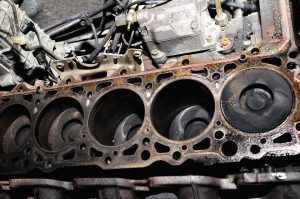
When your car or truck has been in a collision and needs some repairs, it may feel like you have tons of decisions that have to be made all at once. One of those is whether or not you want your vehicle repaired using original equipment manufacturer (OEM) parts or aftermarket—unbranded or otherwise made by a third-party manufacturer—parts used.
Both options have their own advantages and disadvantages. In order to make an informed decision, it helps to know more about the differences between the two. Here are some of the most critical things to consider.
Quality and Reliability
OEM parts are designed and produced by the same manufacturer who made the original parts installed in your vehicle. They are specifically built to meet your vehicle’s specs and ensure that you get optimal compatibility and performance, and they may last longer than aftermarket parts. If you prioritize maintaining the original quality and reliability of your vehicle, OEM parts are generally considered a safer choice.
Warranty Coverage
Using OEM parts may help preserve your vehicle’s warranty. Some manufacturers require the use of OEM parts for repairs to maintain warranty coverage. You may need to review your vehicle’s warranty terms and consult with your manufacturer or dealer to understand their requirements before you make a decision.
Availability and Ease of Obtainment
OEM parts generally have to be ordered through authorized dealerships or specific manufacturers. When there is a high demand or any kind of shipping or manufacturing delays, these parts can become scarce. You could be in for a long wait on your repairs. Aftermarket parts, in comparison, are usually widely available and quick to obtain.
Cost Factors
Cost is a big factor for almost everybody. Aftermarket parts are typically less expensive than OEM parts, although the difference in price doesn’t necessarily mean that they’re of inferior quality. Rather, aftermarket manufacturers usually just don’t need to make up the same overhead costs, marketing, and branding as the original manufacturer.
Insurance Issues
It’s possible that your insurance company—or the insurance company of the at-fault driver that caused your vehicle’s damage—may try to insist on aftermarket parts because they are cheaper. If your car is virtually brand new, you may be able to successfully fight that edict, but it can be a lot more difficult if your car is older—particularly if you have had prior repairs with aftermarket parts.
Customization Needs
One area where aftermarket parts excel is their ability to offer a wider range of options for the customization of your vehicle when compared to OEM parts. If you want to take this opportunity to modify or personalize your vehicle’s appearance or change a few features, aftermarket parts can give you that flexibility.
What’s the Bottom Line When It Comes to OEM vs. Aftermarket Parts?
Ultimately, there are no right or wrong decisions when it comes to whether you decide to stick with OEM parts or you’re fine with using aftermarket ones. It’s solely a matter of your personal preferences.
If your insurance company won’t fully cover the OEM parts you need and you can afford the difference out-of-pocket, you may decide to opt for those in order to maintain your vehicle’s original quality and workmanship. If you have budget concerns, aftermarket parts are still reliable and can be the more affordable option.
Consulting your trusty mechanic and auto body repair professional over the issue is also wise. They can draw on their experience to help you better understand what the difference may actually mean for your specific vehicle. Contact us at Best Collision for all your auto body repair services in Houston and throughout the surrounding area.
